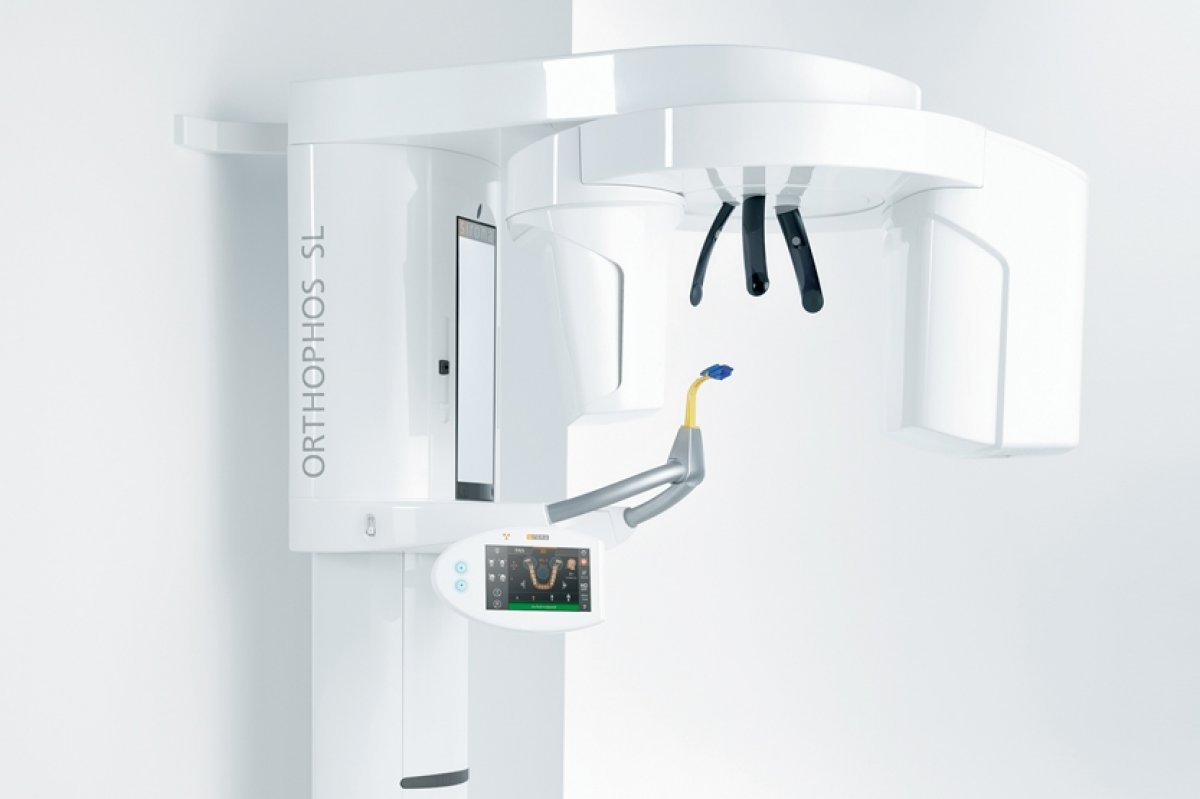The first digital panoramic X-ray machine that Sirona put on the market 20 years ago made perceptible changes in radiological imaging in dentistry – away from films that had to be developed with chemicals and then physically stored to a fast, more precise method with easy storage function.
Digital X-rays, first patented in 1988, became a marketable commodity in 1995. Sirona presented the first panoramic X-ray machine with a digital sensor, the Orthophos Plus DS, 20 years ago. The ultimate goal: top image quality for an even more reliable diagnosis with lower radiation exposure for patients. The workflow within the practice was simultaneously improved. It was no longer necessary to develop films with chemicals.
Since then, digital imaging has become a fixed component of a dental practice and has many advantages over conventional imaging with X-ray films: time is saved because the images are available immediately, the images can be processed on a computer and the image quality is higher with reduced radiation exposure. Today, sensor or scanner systems are usually used for intraoral images instead of conventional films. Three-dimensional imaging has become standard, especially for implantology.
Digital imaging constantly improving
The latest innovations by Sirona in imaging techniques have taken digital imaging to a whole new level. The Direct Conversion Sensor (DCS) is new and absolutely unique in this form. It generates electrical signals directly from X-rays without the previously required intermediate stage of first converting them to light. The image data this yields is significantly better in relation to the exposure to radiation. The Direct Conversion Sensor generates extremely sharp X-ray images very efficiently.
For one panoramic image the Sharp Layer technology, which is also new, uses several thousand individual projections that are taken very rapidly from several angles in one rotation and reproduce the individual morphological situation very precisely. The advantages are excellent panoramic images and the possibility of compensating for positioning errors retroactively.
The future means integration
With respect to the many possibilities for digital imaging diagnostics, there is a clear trend: More and more processes in dental practices are digital. The next step here is integration. "Our products can be easily integrated with one another," says Jörg Haist, Head of Product Management Imaging Systems at Sirona. "Our Sidexis 4 imaging software ensures that panoramic and other X-ray data can not only be processed, but also accessed in the treatment center, documented in the practice administration, and used with CEREC." Thanks to interfaces that have been implemented, Sirona products will remain open for integration of different imaging systems in the future.
20 years of digital panoramic imaging : Seeing better with modern technology
InfoWeb Marketplace
